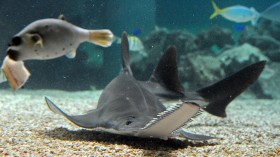Yellowstone National Park's iconic hot springs are a stunning sight even today. But have you ever wondered what they would look like before humanity left its mark on the park? A team of researchers have now devised a model that shows how these natural wonders looked long before tourists set foot there.
A paper on this mathematical model, recently published in the journal Applied Optics, details how the brilliant visible colors of hot spring pools in Yellowstone, such as the Grand Prismatic Spring, were likely even more stunning in a by-gone age.
"When we started the study, it was clear we were just doing it for fun," Michael Vollmer, who co-authored the study, said in a statement.
However, "we were able to show is that you really don't have to get terribly complex - you can explain some very beautiful things with relatively simple models," added Vollmer's colleague Joseph Shaw, who was involved in the work.
The resulting one-dimensional model allowed researchers for the first time to mathematically describe the complex interplay of bacteria mats and underwater vents in these springs - long known to be the causes of the color displays and light scattering that can be seen at these natural national treasures.
Using these calculations, along with previously available information about the physical dimensions of the pools, the researchers were able to create simple renderings of the pools that are strikingly similar to actual photographs.
They also were able to reapply this data to predict what the springs looked like decades ago, when their crucial underwater vents and mats weren't as obscured by pollution such as make-a-wish coins and even trash. (Scroll to read on...)
The researchers note that they primarily looked into how the vents - and thus water temperature and light scattering - has changed over the years.
"There are people at my university who are world experts in the biological side of what's going on in the pools," added Shaw. "They're looking for ways to monitor changes in the biology - when the biology changes, that causes color changes - so we're actually looking at possibilities of collaborating in the future."
For more great nature science stories and general news, please visit our sister site, Headlines and Global News (HNGN).
© 2024 NatureWorldNews.com All rights reserved. Do not reproduce without permission.
![Severe Thunderstorm Alert: Tornadoes, Damaging Winds and Hail Possible from Upper Ohio Valley to Northeast US [NWS]](https://1471793142.rsc.cdn77.org/data/thumbs/full/70161/280/157/50/40/severe-thunderstorm-alert-tornadoes-damaging-winds-and-hail-possible-from-upper-ohio-valley-to-northeast-us-nws.jpg)




